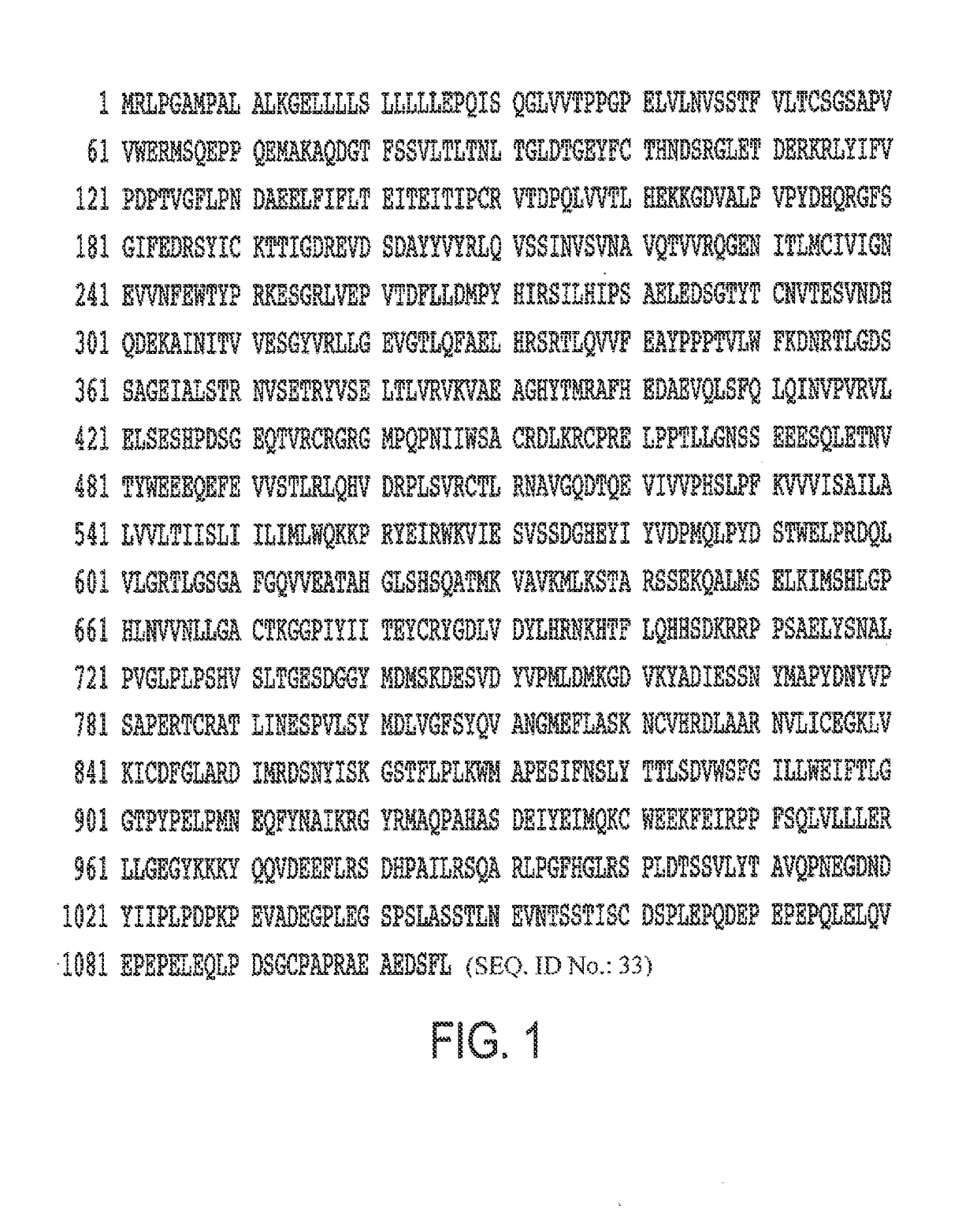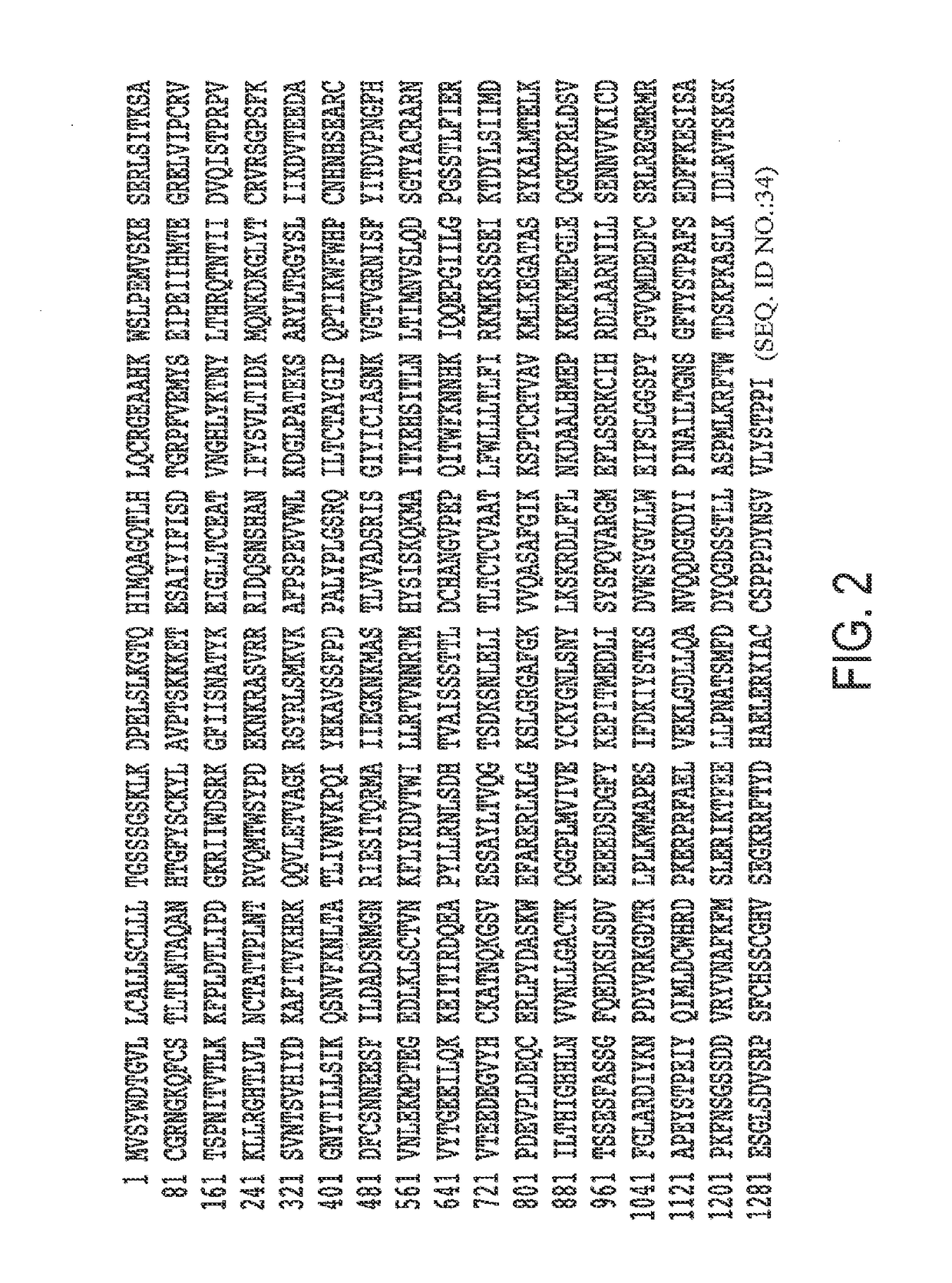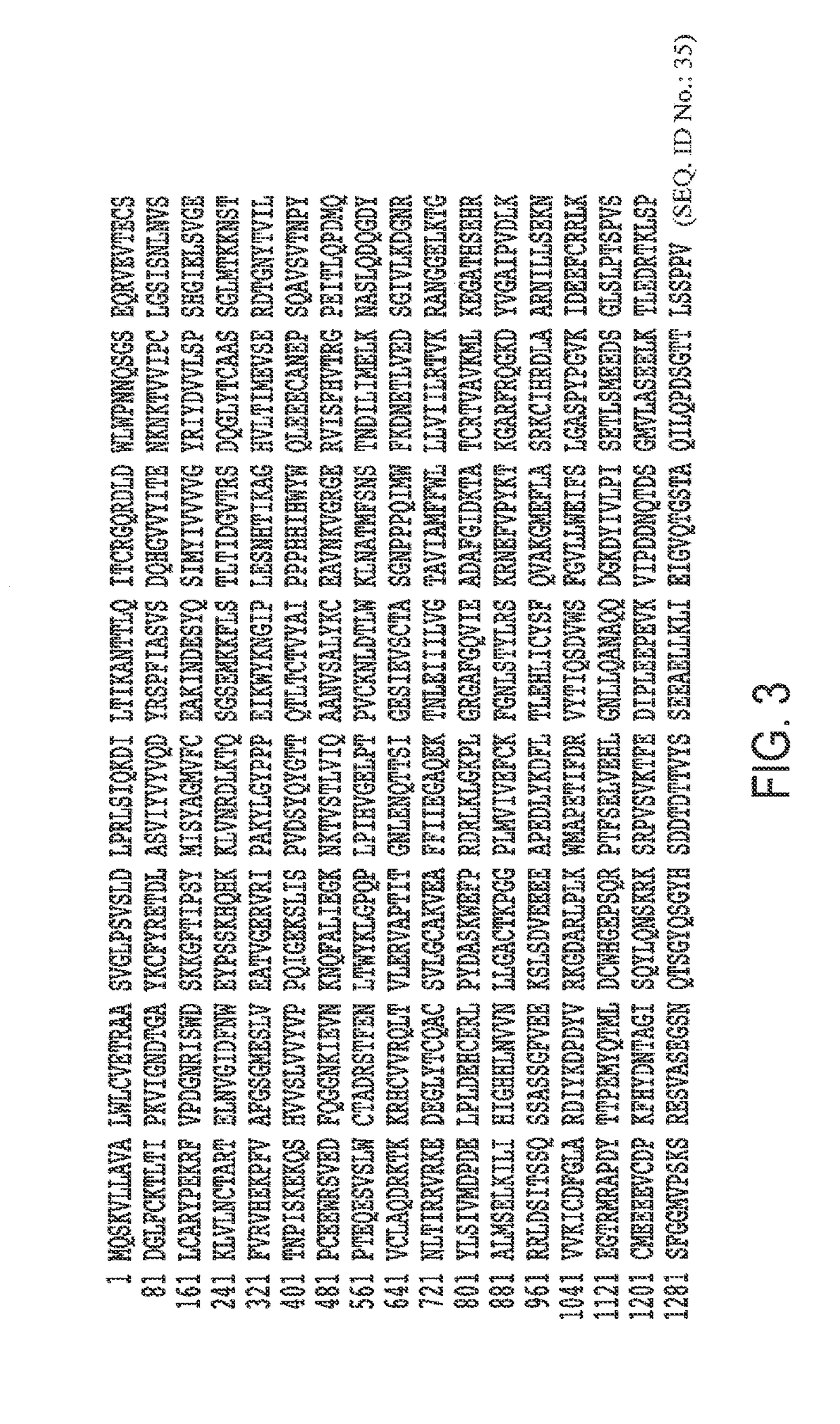Dual pdgf/vegf antagonists
a technology of pdgf and vegf, applied in the field of dual pdgf/vegf antagonists, can solve the problems of loss of vision, impaired or dysregulated angiogenesis, and vision loss in the elderly
- Summary
- Abstract
- Description
- Claims
- Application Information
AI Technical Summary
Benefits of technology
Problems solved by technology
Method used
Image
Examples
example 1
Protein Sequence of PDGFRβ-GS10-anti-VEGF-A Light Chain / Anti-VEGF-A Heavy Chain (Wild Type Fc)
[0340]A PDGFR-β trap-anti-VEGF-A light chain / anti-VEGF-A heavy chain was constructed having the sequence set forth below in FIGS. 7A, B. PDGFR-GS10-anti-VEGF-A light chain amino acids 1-282 correspond to 33 to 314 of human PDGFR-β (UniProtKB / Swiss-Prot: P09619.1), followed by the linker sequence GGGGSGGGGS and the bevacizumab light chain sequence. Optionally, no linker need be used between the PDGFR-β segment and the anti-VEGF segment. Alternatively, the linker may be the GGGGS motif x1, x2 (as noted above), x3, x4, etc. such that the activity of the two proteins is optimized. Other linker motifs known to those of skill in the art may also be used in accordance with the present invention, including G, GG, GGGS and GGGES x1, x2, x3, x4, etc. The linker may be combinations of the above. The sequence of FIG. 7A is set forth in SEQ ID NO. 19. FIG. 7B shows the bevacizumab heavy chain sequence (...
example 2
Protein Sequence of PDGFRβ-GG-anti-VEGF-A Light Chain / Anti-VEGF-A Heavy chain (Wild Type Fc)
[0341]Another PDGFR-β trap-anti-VEGF-A light chain / anti-VEGF-A heavy chain was constructed having the sequence set forth below in FIGS. 8A, B. FIG. 8A amino acids 1-282 correspond to 33 to 314 of human PDGFR-β (UniProtKB / Swiss-Prot: P096119.1), followed by the linker sequence GG and the bevacizumab light chain sequence. Alternatively, the linker may be the GGGGS motif x1, x2, x3, x4, etc. such that the activity of the two proteins is optimized. Other linker motifs may also be used in accordance with the present invention, including G, GG (as noted above), GGGS and GGGES x1, x2, x3, x4, etc. The linker may be combinations of the above. The protein sequence of FIG. 8A is set forth in SEQ ID NO. 3. FIG. 8B shows bevacizumab heavy chain sequence (SEQ ID NO. 2). The bevacizumab light chain of FIG. 8A optionally has an M4L mutation. The bevacizumab heavy chain optionally has one or more of the foll...
example 3
Protein Sequence of PDGFRβ-GS10-anti-VEGRA Heavy Chain (Wild Type Fc) / anti-VEGF-A Light Chain
[0342]Another PDGFR-β trap-anti-VEGF-A heavy chain (wild type Fc) / anti-VEGF-A light chain was constructed having the sequence set forth in FIGS. 9A, B. FIG. 9A amino acids 1-282 correspond to 33 to 314 of human PDGFR-β (UniProtKB / Swiss-Prot: P09619.1), followed by the linker sequence GGGGSGGGGS and the bevacizumab heavy chain sequence, optionally having Q347C or L443C (EU numbering). Alternatively, the linker may be the GGGGS motif x1, x2 (as noted above), x3, x4, etc. such that the activity of the two proteins is optimized. Other linker motifs may also be used in accordance with the present invention, including G, GG, GGGS and GGGES x1, x2, x3, x4, etc. The linker may be combinations of the above. The protein sequence of FIG. 9A is set forth in SEQ ID NO. 4. The protein of FIG. 9B is the bevacizumab light chain sequence (SEQ ID NO. 5). The bevacizumab light chain optionally has an M4L mutat...
PUM
 Login to View More
Login to View More Abstract
Description
Claims
Application Information
 Login to View More
Login to View More - R&D
- Intellectual Property
- Life Sciences
- Materials
- Tech Scout
- Unparalleled Data Quality
- Higher Quality Content
- 60% Fewer Hallucinations
Browse by: Latest US Patents, China's latest patents, Technical Efficacy Thesaurus, Application Domain, Technology Topic, Popular Technical Reports.
© 2025 PatSnap. All rights reserved.Legal|Privacy policy|Modern Slavery Act Transparency Statement|Sitemap|About US| Contact US: help@patsnap.com



